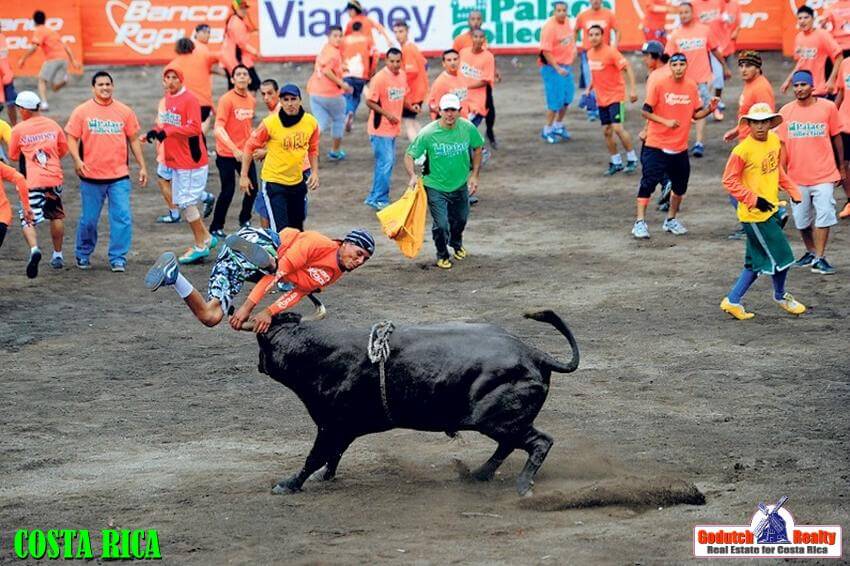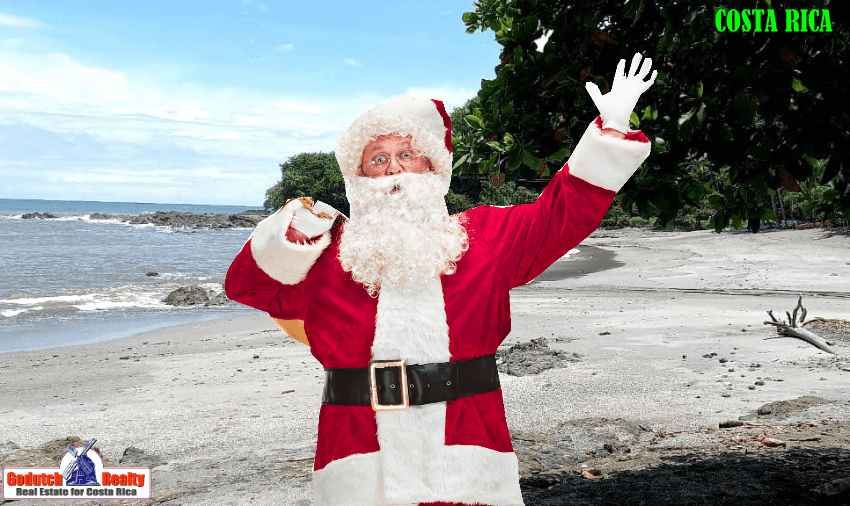Estimated Reading Time: 7 Minutes
Christmas traditions in Costa Rica are probably not what you are used to. You can prevent culture shock by learning what Ticos do during the Christmas holidays and where they go. Christmas Eve in Spanish is Nochebuena.
This country is definitely not boring during Christmas time; there is plenty to do. Unless you prefer to look at homes online because most real estate offices are closed during the holidays, you will find that adjustment to another culture is one of the most challenging things about living in another country. Christmas traditions are usually family-oriented. It is essential to know that Roman Catholicism is our official religion by constitution. This fact clarifies that almost all Christmas traditions in Costa Rica are religion-oriented.
In some countries, like where I was born and raised, residents celebrate the first and second Christmas days. However, only Christmas Eve is observed here on the night of December 24th. December 24th is not a National Holiday, but the 25th is. Everything is closed on the 25th except for the grocery stores. If you plan to attend church, you might find this article about religious services helpful.
I suggest you check the local newspapers before you hop in the car to see if the event is on.
To keep this blog concise, I’ll divide the Christmas traditions in Costa Rica into two topics. First, I will write a separate blog about tamales. Families prepare traditional dishes like tamales, roasted pork, and “rompope,” a Costa Rican version of eggnog.

Christmas entertainment
Some of the events described below happen in San José, but other cities like Alajuela, Cartago, Heredia, Grecia, and Atenas have their own Christmas activities. The province of Guanacaste, for example, has a varied program for the Christmas holidays. Check your local Facebook groups for up-to-date information on the events in your community.
Santa Claus
Santa Claus, or “Papá Noel” as he is affectionately called in Costa Rica, plays a vital role in the country’s Christmas celebrations. While the figure of Santa Claus comes from Western traditions, Costa Ricans have embraced him with their own cultural flair, blending local customs with global holiday practices.
Posadas
Starting December 15th, this is one of the Christmas traditions that you will only see in smaller and rural towns anymore. Children are dressed up as shepherds and go from home to home, asking for lodging while singing Christmas Carols. At the last house (beforehand organized), they will receive dinner. The posada can take days, depending on the size of the town or village.
Pasito or Portal
El Pasito, or portal, is a model of a nativity scene. Ticos usually include Mary, Joseph, Jesus, the wise men, the ox, and the mule. Often, Ticos add extra houses and animals and even build miniature villages. Costa Ricans traditionally install El Pasito from the first days of December until January 6th at Reyes Magos or Epiphany/Three Kings Day.
Misa de Gallo
Misa de Gallo is the Catholic midnight mass, translated into English as Rooster Mass. Traditionally, Misa de Gallo started at midnight and was a two-hour Latin mass. However, most Catholic churches nowadays have only a 45-minute Mass beginning at 11 p.m. Then, Christmas dinner begins after mass.
El Tope
El tope is the famous horse parade, which draws participants from all over the country. It is always on December 26th, but unfortunately, the Municipality of San Jose is not organizing it for 2024. The topes is a prize-winning contest. There is always an alcohol restriction.

Christmas Tree Lighting
Traditionally, the illumination of the Christmas tree at the Children’s Hospital is a massive event during the first week of December. The national power company CNFL began this tradition in 1964.
Most Costa Ricans do set up a Christmas tree in their home. The Pasito or portal goes underneath the tree, just like anywhere else. You can buy trees directly from the farmers at the higher altitudes of the Central Valley, like Alajuelita, San Ramon de Tres Ríos, San Ramon, Grecia, and other fabulous locations.
Avenidazo
El Avenidazo is a boardwalk event during the first two weeks of December. During the afternoon and evening, visitors can freely enjoy Christmas carols, concerts, and traditional masquerades representing Christmas personalities. El Avenidazo is on Central Avenue, starting at the San Juan de Dios hospital and ending at the foot of Cuesta Mora (the whole boulevard). In addition, there is a theatre, free entrance, and storytellers for children at the Plaza de la Cultura.

Festival de la Luz
The San José municipality and the CNFL (National Power Company) organize El Festival de la Luz when all the Christmas lights are lit on the 2nd Saturday of December. Festival de la Luz is one of the most important Christmas traditions. The festival starts in Sabana at 6 pm and ends at the National Museum on 2nd Avenue around midnight. Participants are the school, high, and university marching bands, floats by large commercial brands, and cheerleading teams. Every year, the municipality of San José chooses a different marshal(s). The Festival de la Luz is a prize-winning contest.
Fiestas de Zapote – Toros a la Tica
The Fiestas de Zapote is a festival that customarily begins the last week of December and lasts until the first week of January. The main attractions of these festivities are the Chinamos, bars, amusement rides, and bullfights a la Tica.
For the Toros a la Tica or bullfights a la Tica, the bull breeders show off hundreds of their best bulls to challenge men and women’s ability to run away from the bulls’ horns. Participants do not harm the bulls in this style of bullfighting, but plenty of runners do.
See a video that shows what a Cimarrona mascarada is
El Carnaval
This year, 2024, The San José municipality will not organize the usual December 27th El Carnaval. Dance groups (contemporary and folklore), Caribbean dance troupes, costumes, cimarronas, and antique cars participate. The Carnival starts in Sabana, goes through Paseo Colon, Avenida Segunda, and goes to the National Museum. The Carnival is a prize-winning contest.

The beach
December 25th is the first day of Ticos’ mass departure, and everybody takes off to the beach. The only things you can count on are that it won’t snow during Christmas and that if you go to the beach, you’ll be stuck in traffic for hours. The beach is a weird place to spend the Christmas holidays, but expats get used to it quickly. Real estate offices usually close two days before Christmas until the first week of January.
Feliz Navidad, and happy holidays. As always, we appreciate your real estate business! Are you planning to purchase or rent during the Christmas holidays? Then contact us first. We might be enjoying our well-earned vacation.
Feel free to comment on this blog and share this article on your social media. Would you like to learn more about buying property in Costa Rica? Then request a Zoom meeting with me now.























